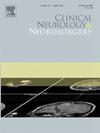Behavioral pain scales, vital signs, and pupilometry to pain assessment in the critically ill patient: A cross sectional study
IF 1.8
4区 医学
Q3 CLINICAL NEUROLOGY
引用次数: 0
Abstract
Background
Detecting pain in sedated critically ill patients requires utmost attention.
Aim
To assess the pain in mechanically ventilated critically ill patients with the Behavioral Pain Scale (BPS), Behavioral Indicators Pain Scale (ESCID), the pupillary dilation response (PDR), and vital signs.
Design
Cross-sectional study
Methods
The study was conducted between March and December 2019, involving patients with a baseline BPS of 3, ESCID of 0, and RASS between −1 and −4. Patients with mobility limitations or altered pupillary reflexes were excluded. We measured before and after non-painful stimulation (NP) followed by 10–20–30–40 mA stimuli and endotracheal aspirate (ETA). The primary outcome was the pain measured with BPS and ESCID scales and PDR with AlgiScan® pupilometer defined as BPS≥4, ESCID≥1, and PDR≥11,5 %. We performed a descriptive study and analyzed the agreement between pain detection methods.
Results
Thirty-one patients were included, and 183 measurements were recorded. The scales showed minimal changes. Approximately 30 % of patients reported pain at a 30 mA stimulus, increasing to over 70 % after ETA. The PDR ranged from 2 % to 6-33% on the ETA, even in pain-free patients, with pain incidence between 70 % and 100 % for the 40 mA and ETA stimuli. Vital signs did not show relevant changes. The PDR had over 90 % agreement with scales for no pain. For higher-intensity stimuli, agreement ranged from 60 % to 80 %. Disagreement occurred when there was no pain by scales (BPS<4; ESCID<1) and pain with PDR (PDR≥11.5).
Conclusions
Pain behavioral scores and vital signs were low in critically ill patients. PDR detected a nociceptive pain response in no-pain patients.
危重病人的行为疼痛量表、生命体征和对疼痛评估的瞳孔测量:一项横断面研究。
背景:目的:使用行为疼痛量表(BPS)、行为指标疼痛量表(ESCID)、瞳孔扩张反应(PDR)和生命体征评估机械通气重症患者的疼痛:横断面研究 方法:研究在 2019 年 3 月至 12 月期间进行,涉及基线 BPS 为 3、ESCID 为 0、RASS 在 -1 至 -4 之间的患者。排除了行动不便或瞳孔反射改变的患者。我们在无痛刺激(NP)前后进行了测量,然后进行了 10-20-30-40 毫安刺激和气管内吸痰(ETA)。主要结果是使用 BPS 和 ESCID 量表测量疼痛,使用 AlgiScan® 瞳孔计测量 PDR,定义为 BPS≥4, ESCID≥1, PDR≥11.5 %。我们进行了一项描述性研究,并分析了疼痛检测方法之间的一致性:结果:共纳入 31 名患者,记录了 183 次测量。量表的变化很小。约 30% 的患者在 30 毫安刺激下报告疼痛,ETA 后增加到 70% 以上。ETA 的 PDR 从 2% 到 6-33% 不等,即使在无痛患者中也是如此,在 40 毫安和 ETA 刺激下,疼痛发生率介于 70% 和 100% 之间。生命体征未出现相关变化。PDR 与无痛量表的一致性超过 90%。对于强度较高的刺激,两者的一致性在 60% 到 80% 之间。在无疼痛时,量表的一致性会出现分歧(BPS 结论:疼痛行为评分和生命体征的一致性在一定程度上取决于量表:重症患者的疼痛行为评分和生命体征较低。PDR 可检测到无痛患者的痛觉反应。
本文章由计算机程序翻译,如有差异,请以英文原文为准。
求助全文
约1分钟内获得全文
求助全文
来源期刊

Clinical Neurology and Neurosurgery
医学-临床神经学
CiteScore
3.70
自引率
5.30%
发文量
358
审稿时长
46 days
期刊介绍:
Clinical Neurology and Neurosurgery is devoted to publishing papers and reports on the clinical aspects of neurology and neurosurgery. It is an international forum for papers of high scientific standard that are of interest to Neurologists and Neurosurgeons world-wide.
 求助内容:
求助内容: 应助结果提醒方式:
应助结果提醒方式:


